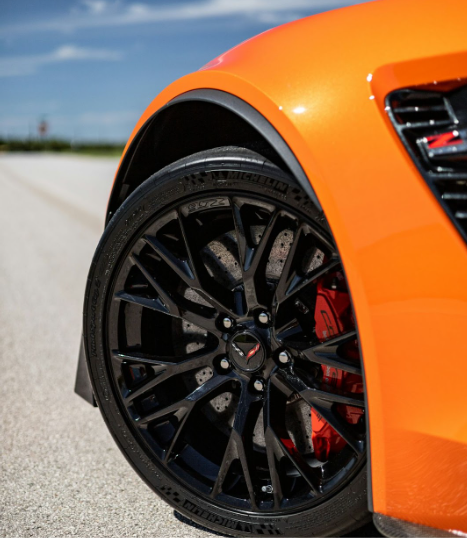Going fast has been in the American car enthusiast’s blood since cars began to be mass-produced in the US. In 1949, Oldsmobile released its Rocket 88, widely credited as the first muscle car. It was a light car with a big V8 engine. Its top speed was 97 miles per hour, and it produced 135 horsepower, slow and underpowered by today’s standards.
The Rocket 88 checked all the muscle car boxes; it was light, made good horsepower and torque, was fast and looked good. The Rocket 88 kickstarted the American fascination with fast, high-power cars, and the 75-year race among American automotive manufacturers to make a car that was bigger, better and faster than their competitors.
In 1953, Chevrolet released the Corvette for the first year. It weighed in at 2705 lbs (the average weight of most cars around 1953 was 4000 lbs), had a top speed of 105 miles per hour and made 150 horsepower from an inline six-cylinder engine. It was light, fast and looked good. The Corvette was an instant success with Americans. Two years later, in 1955, a 4.3-liter small-block V8 was made available, producing a whopping 195 horsepower, beginning the 70-year saga of V8 corvettes.
In the 72 years that Corvettes have been produced, there have been eight generations, each devoted to making more power, being faster, and looking better than the last. Chevrolet is currently producing the eighth generation of Corvette, which they began producing in 2020. The C8 is the first generation of Corvette to feature a rear mid-engine design, meaning that the engine sits behind the driver but in front of the rear axle.
The 2025 Corvette Stingray, the lowest-priced Corvette option for the 2025 model year, produces 495 horsepower, with higher-end options like the E-ray and the Z06 producing 655 and 670 horsepower respectively.
The star of the modern Corvette lineup is the 2025 ZR1 Corvette. It blows away previous records for the fastest car built by American auto manufacturers, reaching a top speed of 233 miles per hour when tested on the high-speed oval at the ATP testing facility in Papenburg, Germany.
To achieve the remarkable 1064 horsepower power output and a top speed of 233 mph, the 2025 ZR1 uses a 5.5-liter twin-turbocharged flat plane V8 and a carbon fiber aerodynamics package that produces 1200 lbs of downforce at top speed.
The 2025 ZR1 is available in 10 body colors, nine interior color schemes, and five different wheel options, including an entirely carbon fiber wheel option. Two trim levels are available: 1LZ and 3LZ. Both trim levels include carbon fiber trim and Bose premium speakers, while the 3LZ features leather performance seats and leather-wrapped steering wheel and instrument panels.
So why did Chevrolet create such a powerful car? The answer is simple: they want to compete with supercars made by the best car manufacturers in the world.
A press release from the Chevrolet newsroom announcing the creation of the 2025 ZR1 stated, “The King of the Hill returns with the most powerful V8 ever produced in America from an auto manufacturer, mind-bending specs and iconic design to challenge the world’s best supercars in both coupe and convertible variants.”
How does the 2025 ZR1 compare to other supercars? The Porsche Taycan Turbo GT produces 1019 horsepower and has a top speed of 180mph, at a price point of $230,000. The 2025 ZR1 is estimated to cost $180,000 to $205,000, produces 45 more horsepower, and has a top speed 50 mph faster than the Taycan.
The 2025 ZR1 Corvette exemplifies top performance, is made by an American company, is more affordable than almost any other supercar and can go toe-to-toe with any of them.







